Abstract
This paper describes the development and main results over the last 30 years from the treatment-research project with developmentally disabled (autistic) children in the Psychology Department at the University of California, Los Angeles (UCLA). Three important dimensions in treatment research are addressed. The first pertains to the role of serendipity or accidental discoveries, the second to the importance of pursuing inductive rather than theory-driven research, and the third to the importance of adding in a cumulative and step-wise manner to improve treatment adequacy. Data from various areas of treatment research have been used to illustrate new directions for the project. These illustrations center on early and successful attempts to isolate experimentally the environmental variables that control self-injury, failure to observe response and stimulus generalization with subsequent loss of treatment gains, and the main results of intensive and early behavioral intervention in the child's natural environment. Effective treatment for severe behavioral disorders is seen to require early intervention carried out during all or most of the child's waking hours, addressing all significant behaviors in all of the child's environments, by all significant persons, for many years.
Full text
PDF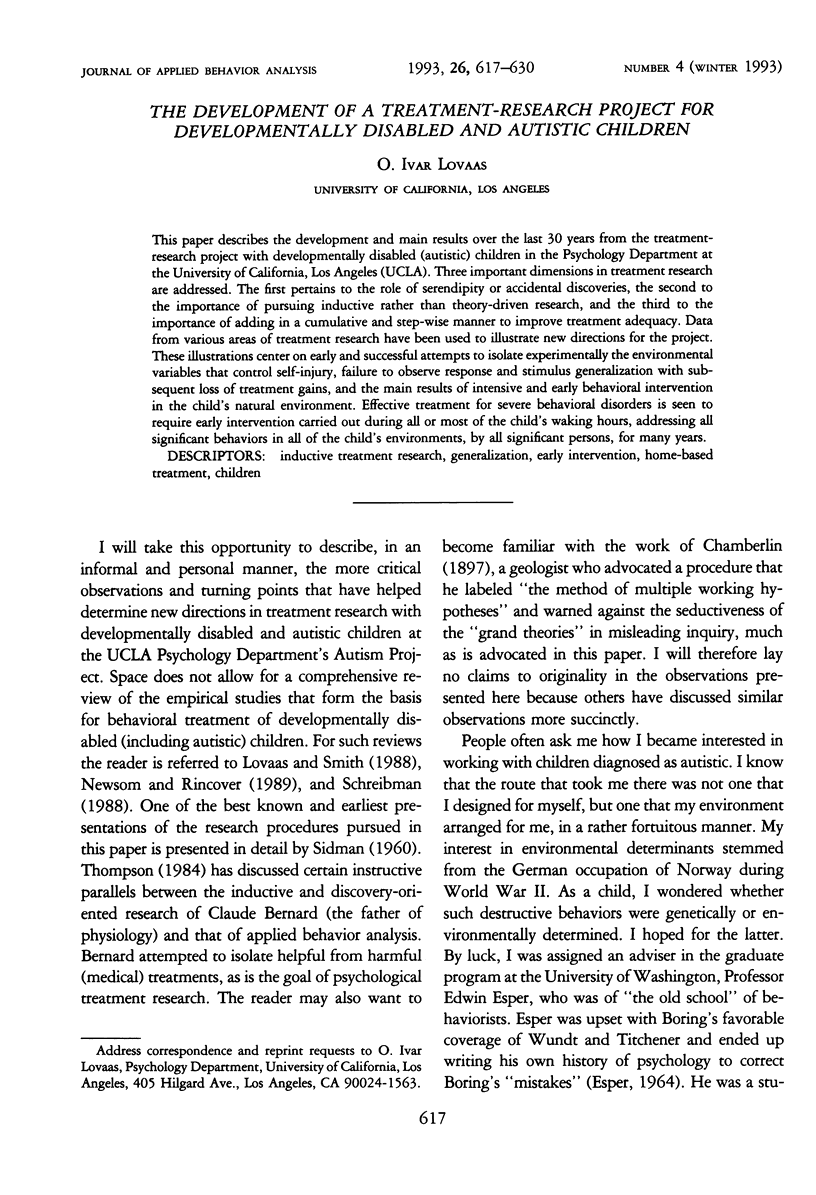

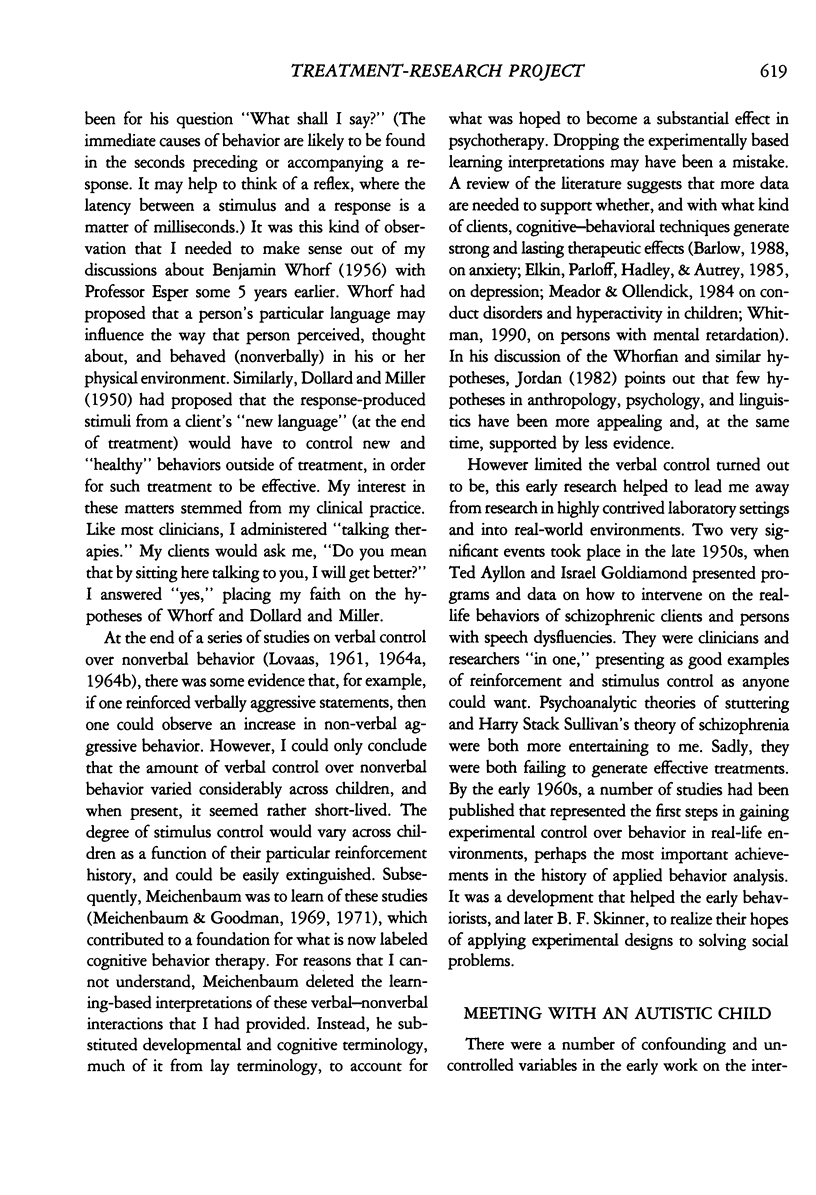
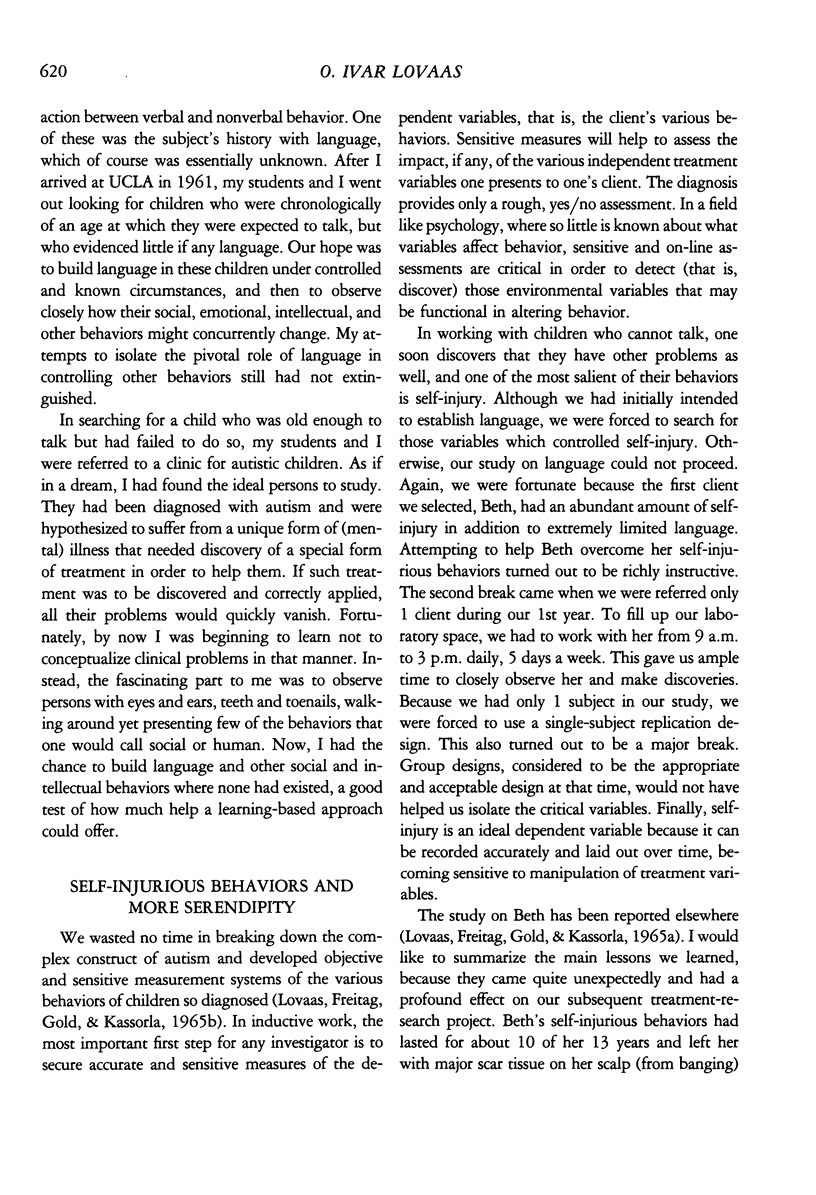
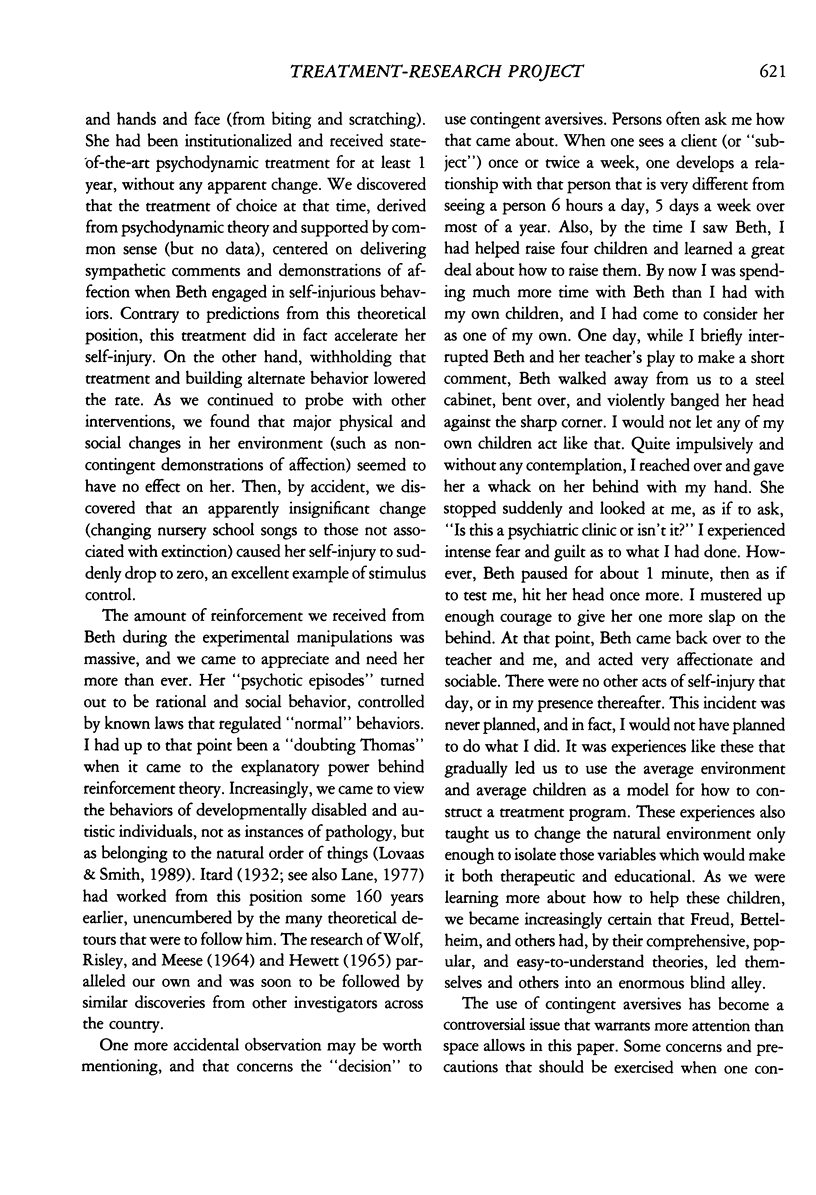
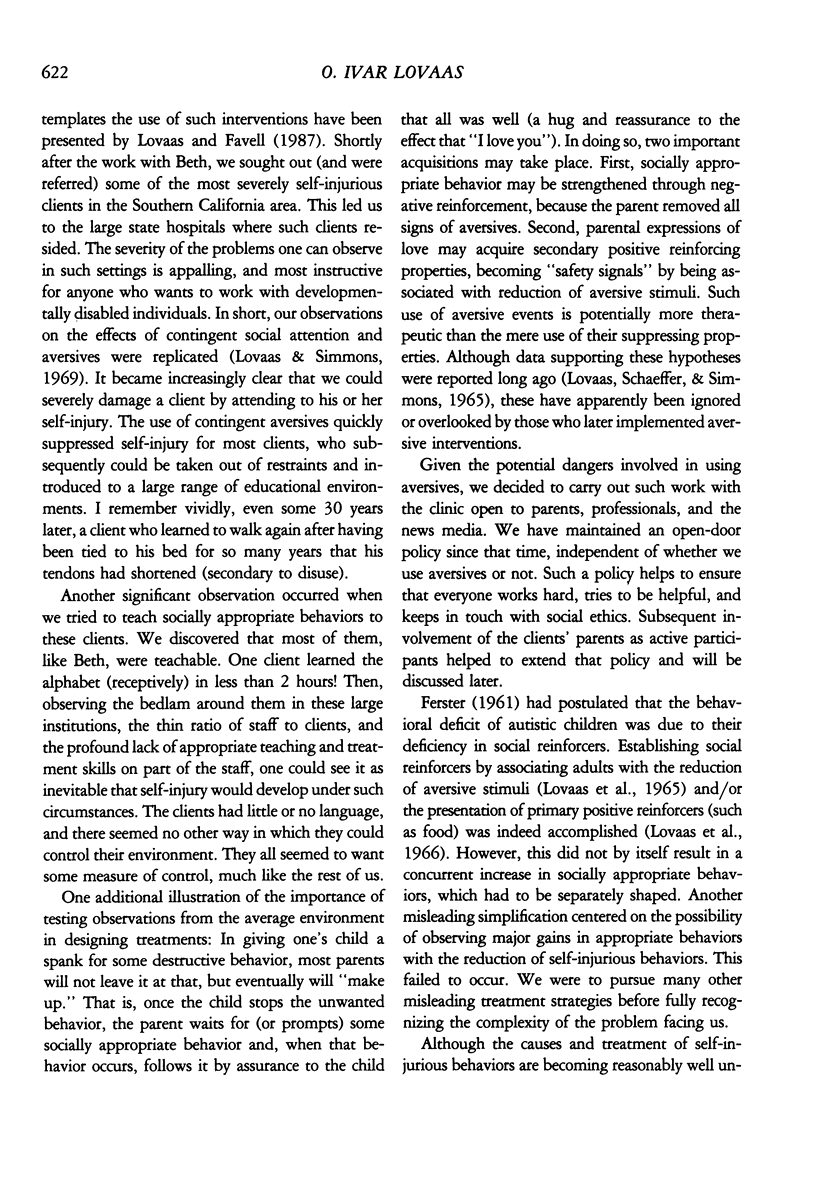
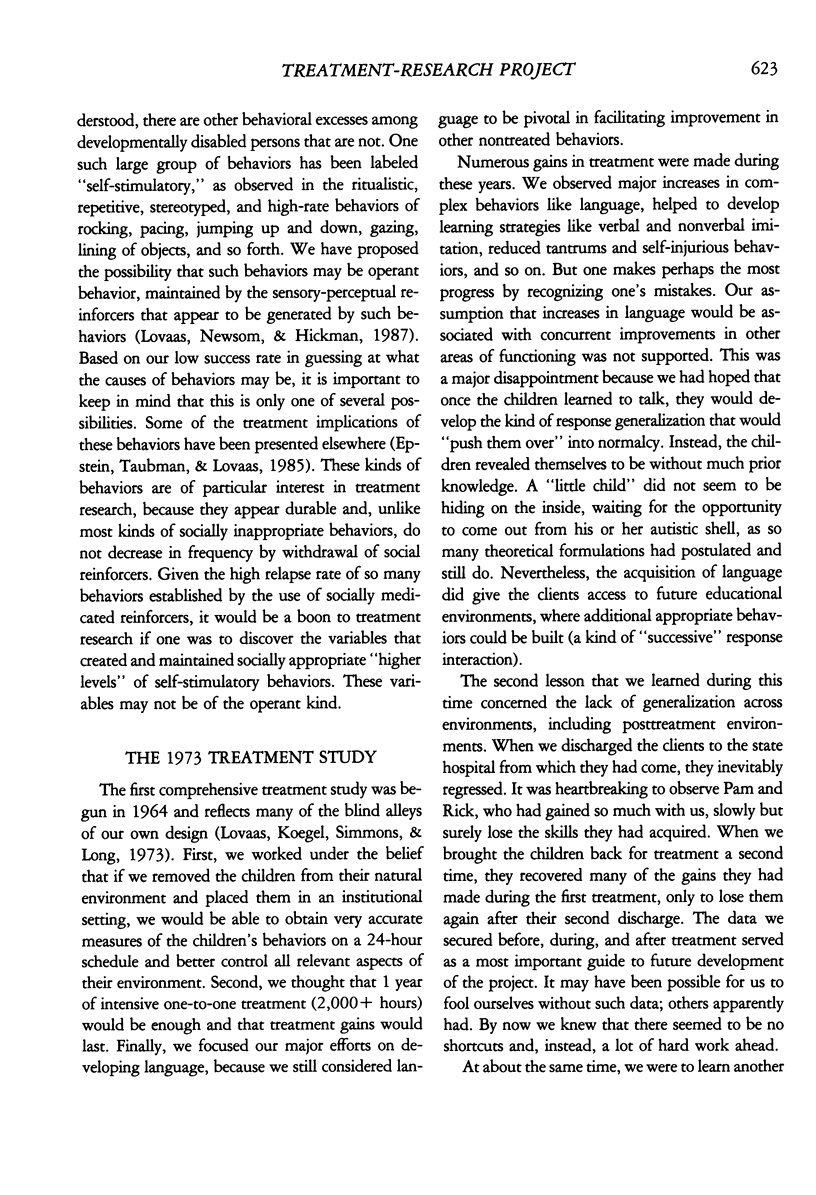
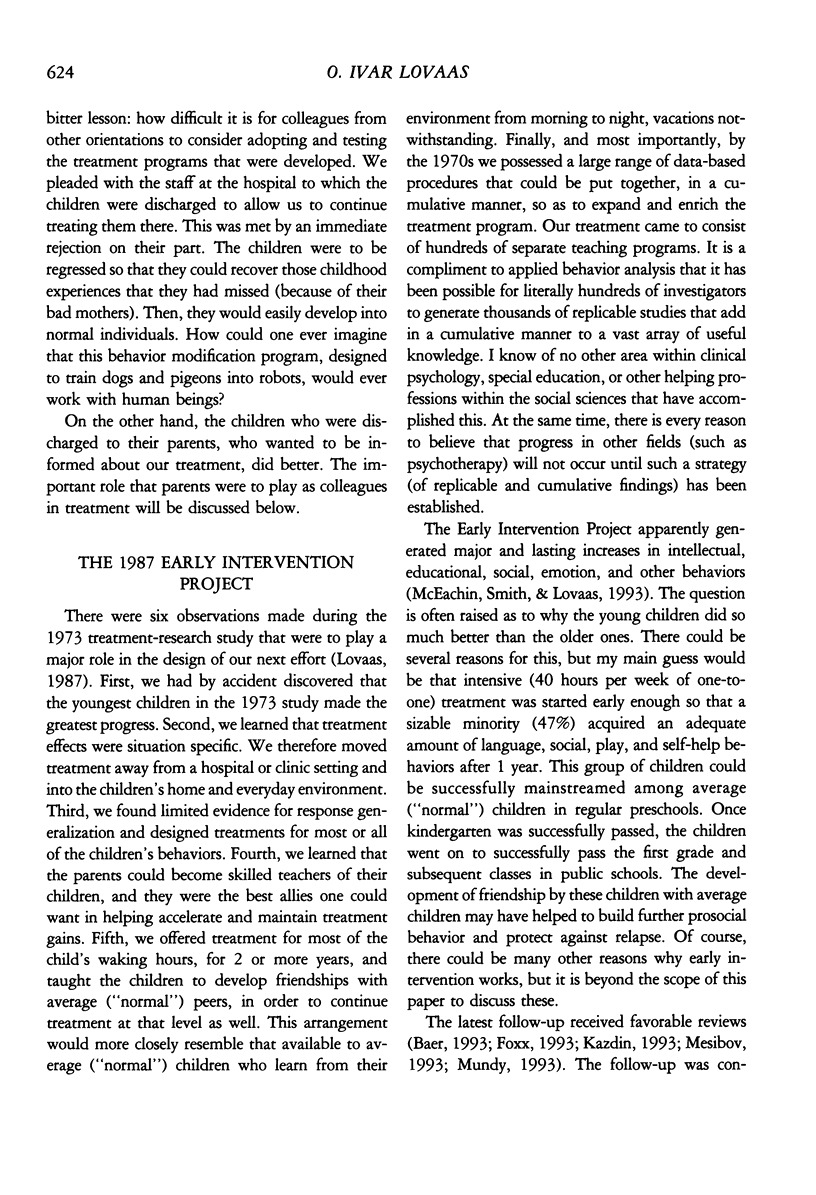
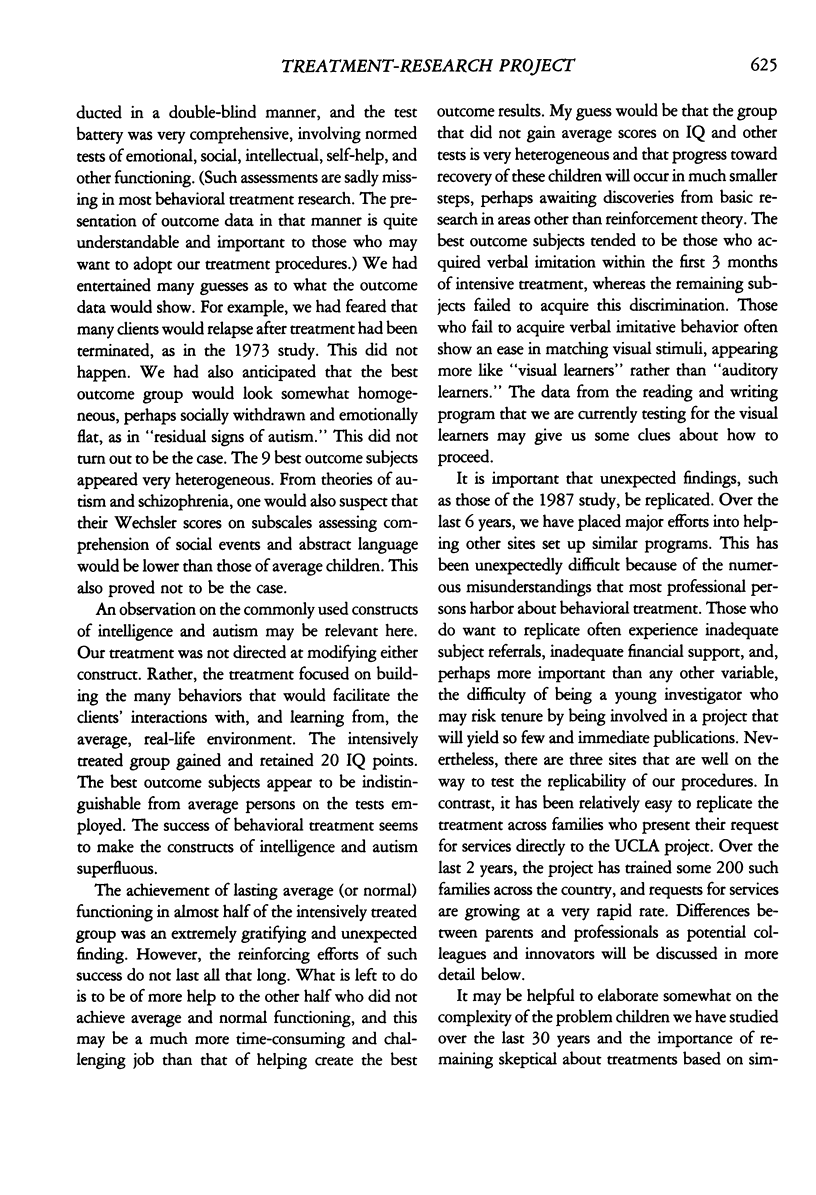

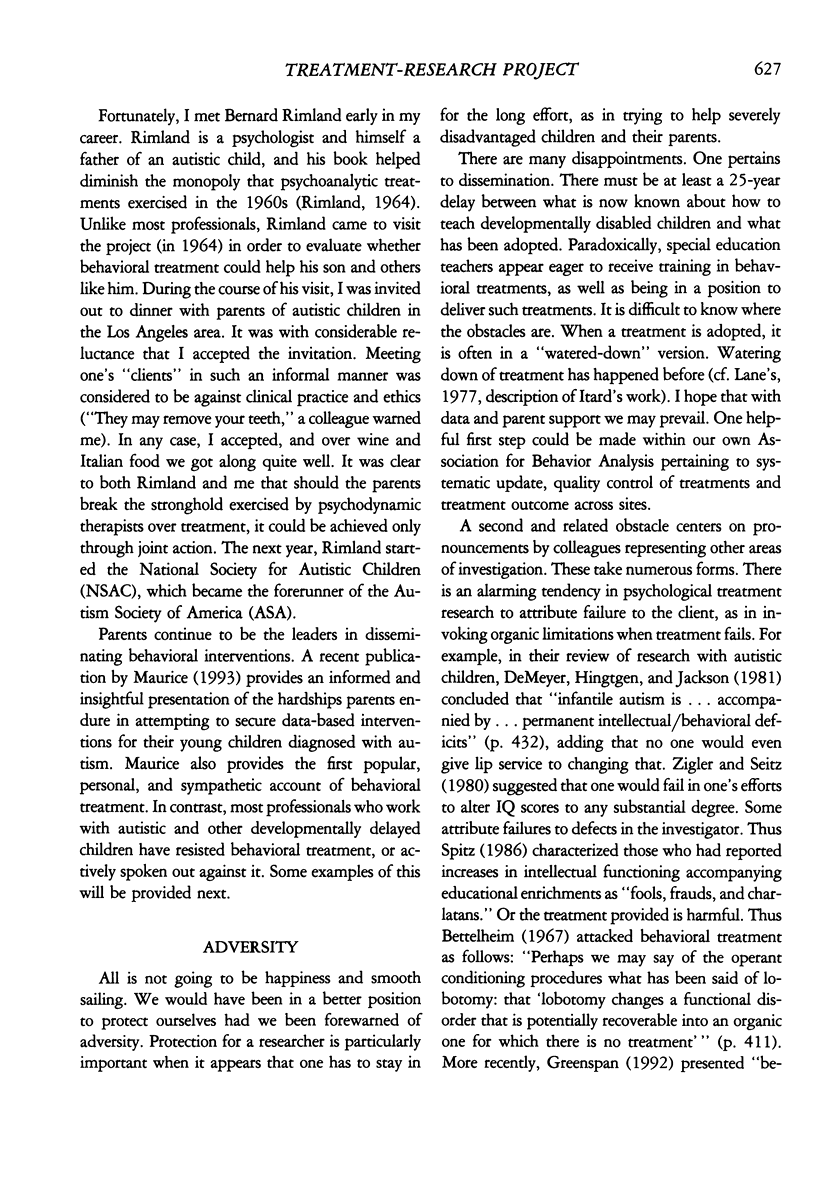
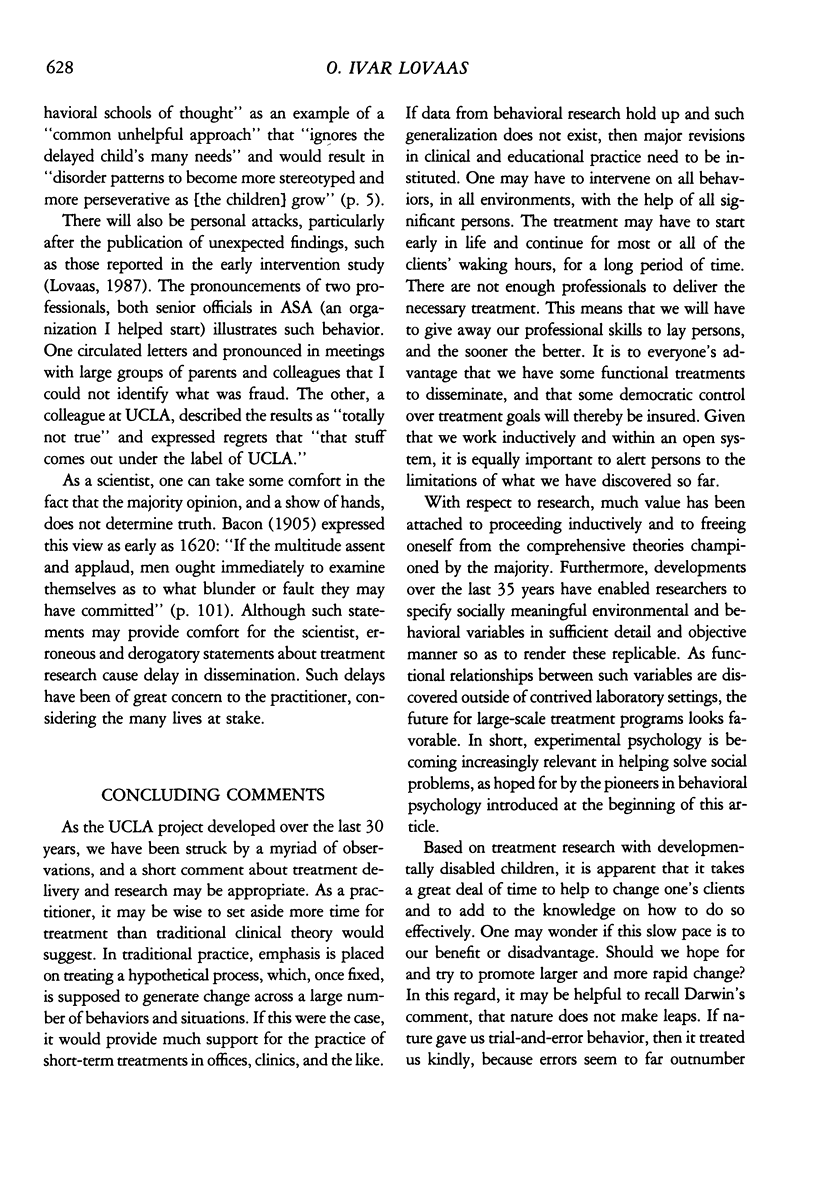
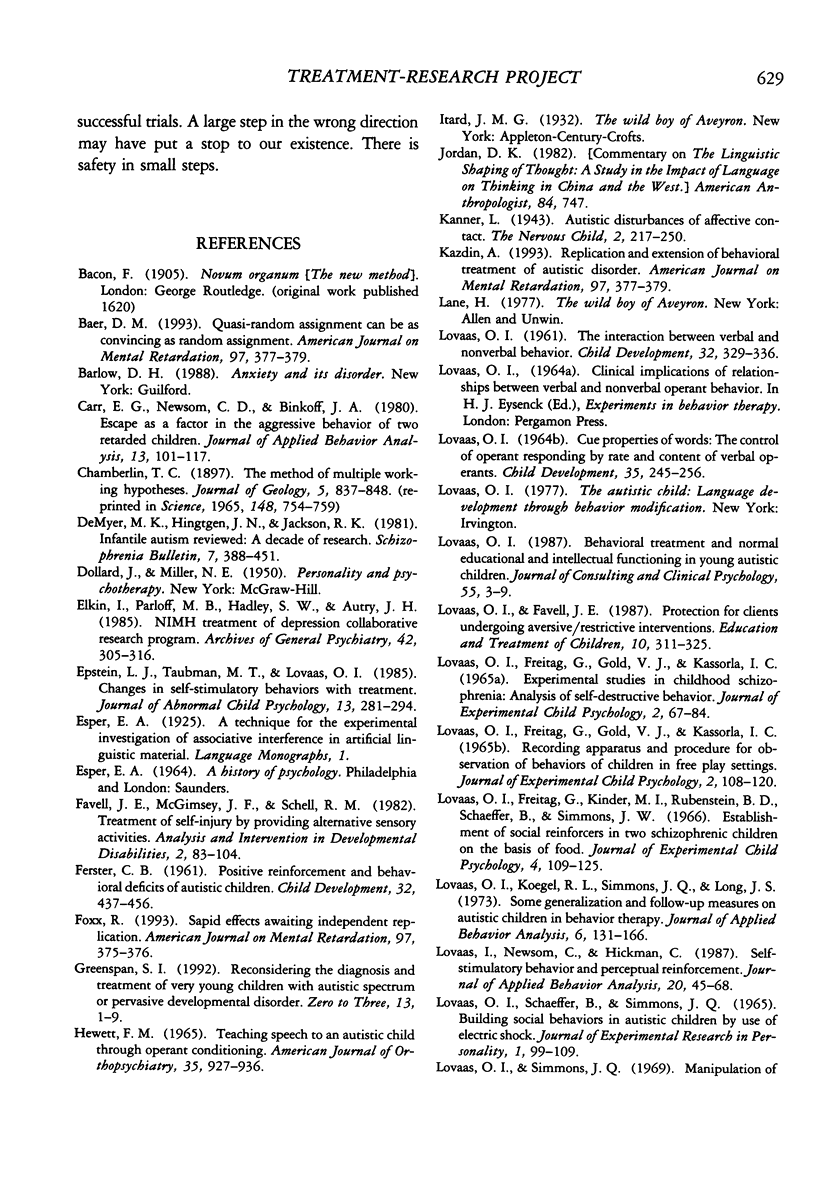
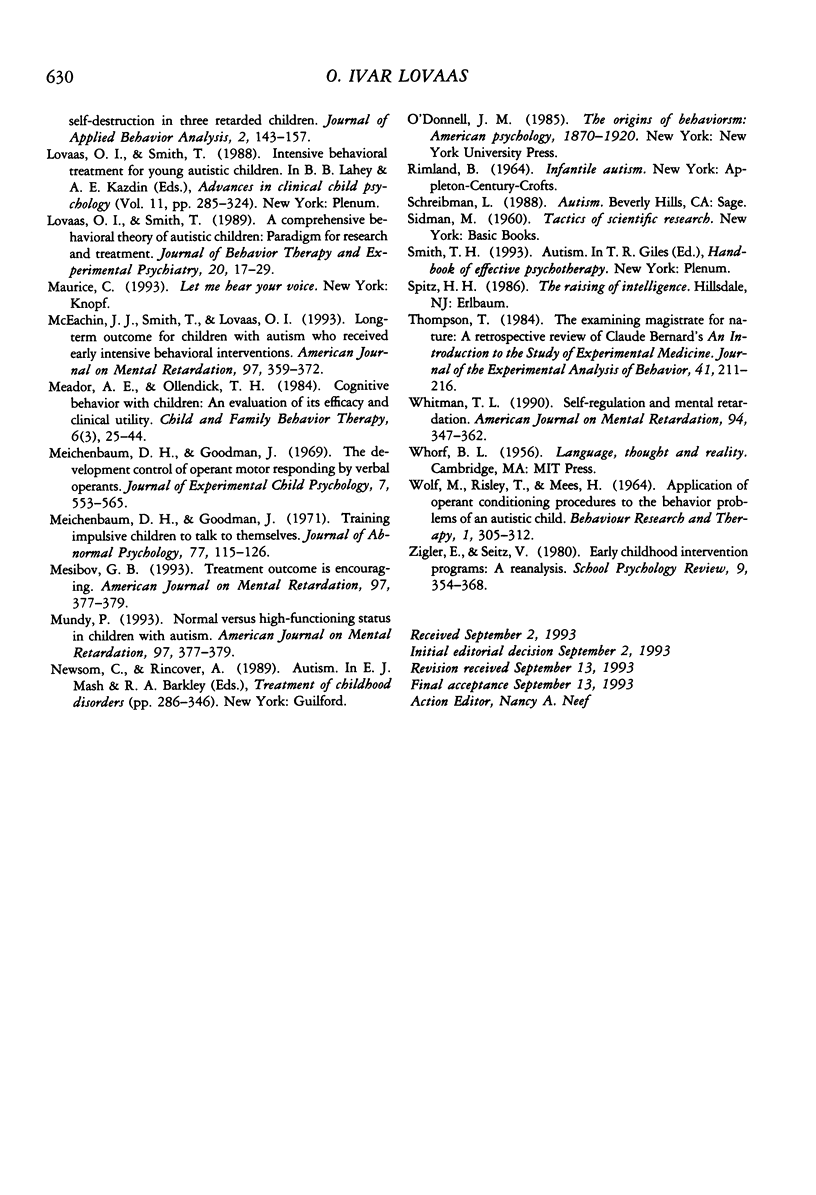
Selected References
These references are in PubMed. This may not be the complete list of references from this article.
- Carr E. G., Newsom C. D., Binkoff J. A. Escape as a factor in the aggressive behavior of two retarded children. J Appl Behav Anal. 1980 Spring;13(1):101–117. doi: 10.1901/jaba.1980.13-101. [DOI] [PMC free article] [PubMed] [Google Scholar]
- DeMyer M. K., Hingtgen J. N., Jackson R. K. Infantile autism reviewed: a decade of research. Schizophr Bull. 1981;7(3):388–451. doi: 10.1093/schbul/7.3.388. [DOI] [PubMed] [Google Scholar]
- Elkin I., Parloff M. B., Hadley S. W., Autry J. H. NIMH Treatment of Depression Collaborative Research Program. Background and research plan. Arch Gen Psychiatry. 1985 Mar;42(3):305–316. doi: 10.1001/archpsyc.1985.01790260103013. [DOI] [PubMed] [Google Scholar]
- Epstein L. J., Taubman M. T., Lovaas O. I. Changes in self-stimulatory behaviors with treatment. J Abnorm Child Psychol. 1985 Jun;13(2):281–293. doi: 10.1007/BF00910648. [DOI] [PubMed] [Google Scholar]
- FERSTER C. B. Positive reinforcement and behavioral deficits of autistic children. Child Dev. 1961 Sep;32:437–456. doi: 10.1111/j.1467-8624.1961.tb05042.x. [DOI] [PubMed] [Google Scholar]
- Hewett F. M. Teaching speech to an autistic child through operant conditioning. Am J Orthopsychiatry. 1965 Oct;35(5):927–936. doi: 10.1111/j.1939-0025.1965.tb00472.x. [DOI] [PubMed] [Google Scholar]
- LOVAAS O. I. CUE PROPERTIES OF WORDS: THE CONTROL OF OPERANT RESPONDING BY RATE AND CONTENT OF VERBAL OPERANTS. Child Dev. 1964 Mar;35:245–256. doi: 10.1111/j.1467-8624.1964.tb05934.x. [DOI] [PubMed] [Google Scholar]
- LOVAAS O. I. Interaction between verbal and nonverbal behavior. Child Dev. 1961 Jun;32:329–336. doi: 10.1111/j.1467-8624.1961.tb05031.x. [DOI] [PubMed] [Google Scholar]
- Lovaas I., Newsom C., Hickman C. Self-stimulatory behavior and perceptual reinforcement. J Appl Behav Anal. 1987 Spring;20(1):45–68. doi: 10.1901/jaba.1987.20-45. [DOI] [PMC free article] [PubMed] [Google Scholar]
- Lovaas O. I. Behavioral treatment and normal educational and intellectual functioning in young autistic children. J Consult Clin Psychol. 1987 Feb;55(1):3–9. doi: 10.1037//0022-006x.55.1.3. [DOI] [PubMed] [Google Scholar]
- Lovaas O. I., Freitag G., Kinder M. I., Rubenstein B. D., Schaeffer B., Simmons J. Q. Establishment of social reinforcers in two schizophrenic children on the basis of food. J Exp Child Psychol. 1966 Oct;4(2):109–125. doi: 10.1016/0022-0965(66)90011-7. [DOI] [PubMed] [Google Scholar]
- Lovaas O. I., Koegel R., Simmons J. Q., Long J. S. Some generalization and follow-up measures on autistic children in behavior therapy. J Appl Behav Anal. 1973 Spring;6(1):131–165. doi: 10.1901/jaba.1973.6-131. [DOI] [PMC free article] [PubMed] [Google Scholar]
- Lovaas O. I., Simmons J. Q. Manipulation of self-destruction in three retarded children. J Appl Behav Anal. 1969 Fall;2(3):143–157. doi: 10.1901/jaba.1969.2-143. [DOI] [PMC free article] [PubMed] [Google Scholar]
- Lovaas O. I., Smith T. A comprehensive behavioral theory of autistic children: paradigm for research and treatment. J Behav Ther Exp Psychiatry. 1989 Mar;20(1):17–29. doi: 10.1016/0005-7916(89)90004-9. [DOI] [PubMed] [Google Scholar]
- McEachin J. J., Smith T., Lovaas O. I. Long-term outcome for children with autism who received early intensive behavioral treatment. Am J Ment Retard. 1993 Jan;97(4):359–391. [PubMed] [Google Scholar]
- Meichenbaum D. H., Goodman J. Training impulsive children to talk to themselves: a means of developing self-control. J Abnorm Psychol. 1971 Apr;77(2):115–126. doi: 10.1037/h0030773. [DOI] [PubMed] [Google Scholar]
- Meichenbaum D., Goodman J. The developmental control of operant motor responding by verbal operants. J Exp Child Psychol. 1969 Jun;7(3):553–565. doi: 10.1016/0022-0965(69)90016-2. [DOI] [PubMed] [Google Scholar]
- doi: 10.1901/jeab.1984.41-211. [DOI] [PMC free article] [Google Scholar]


